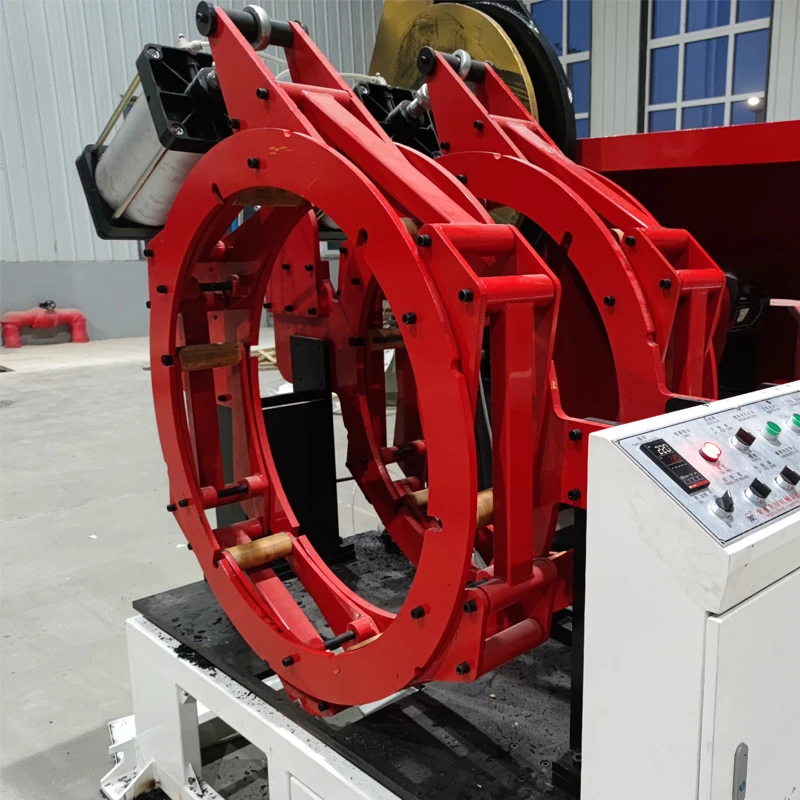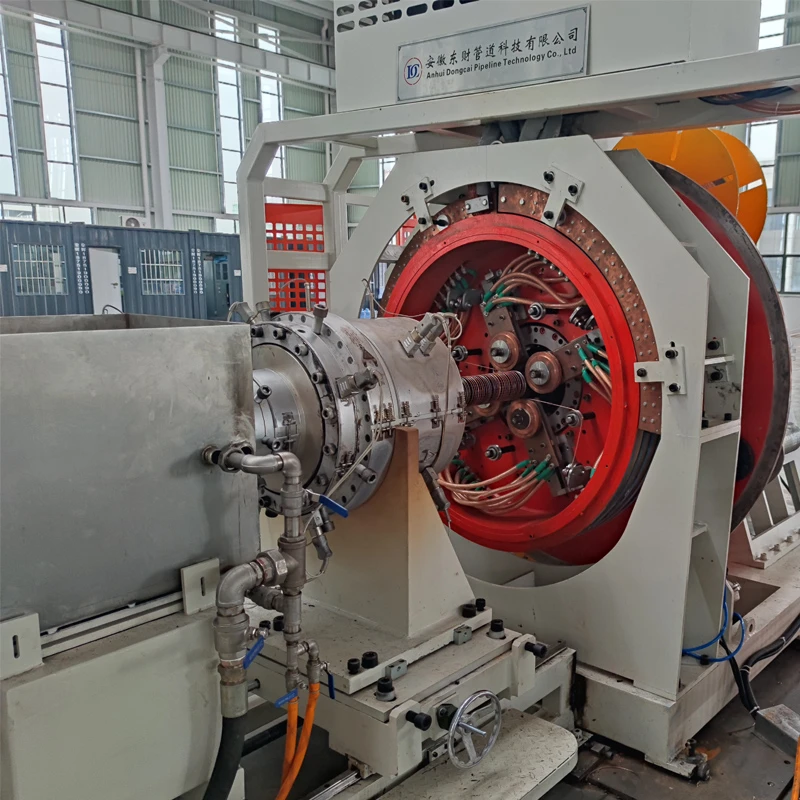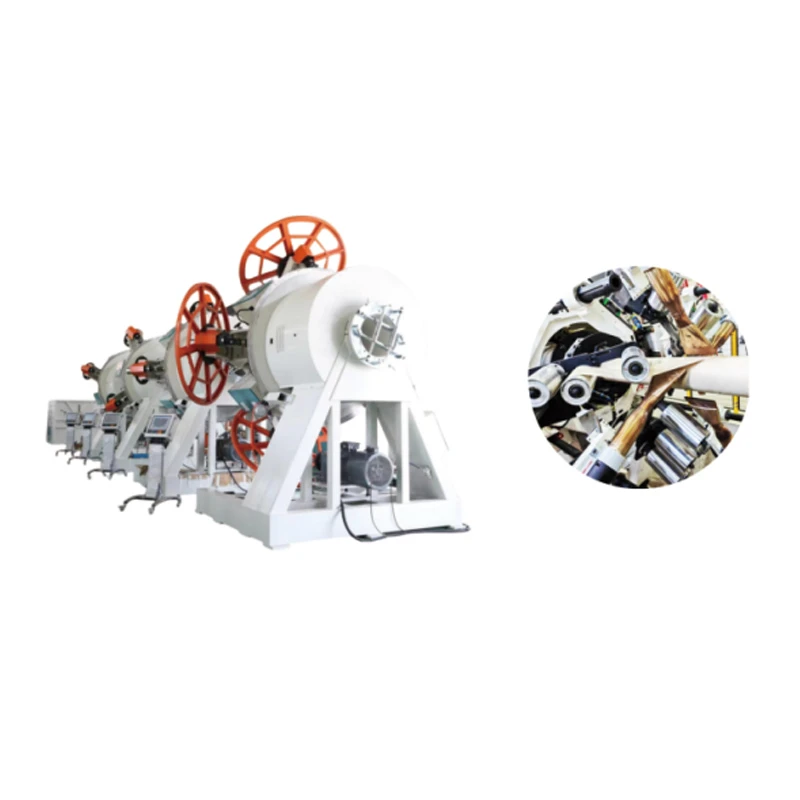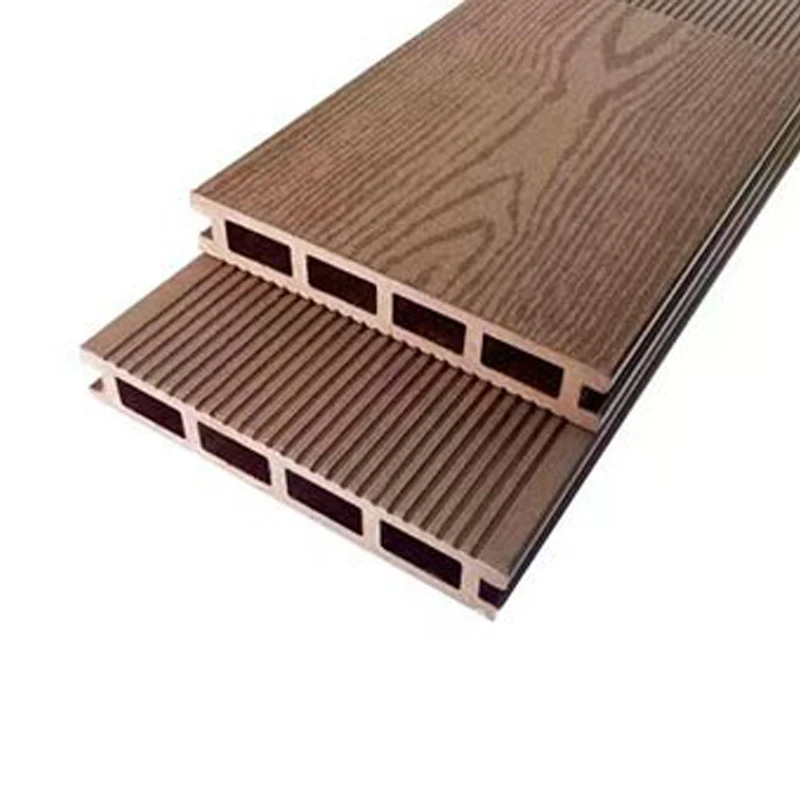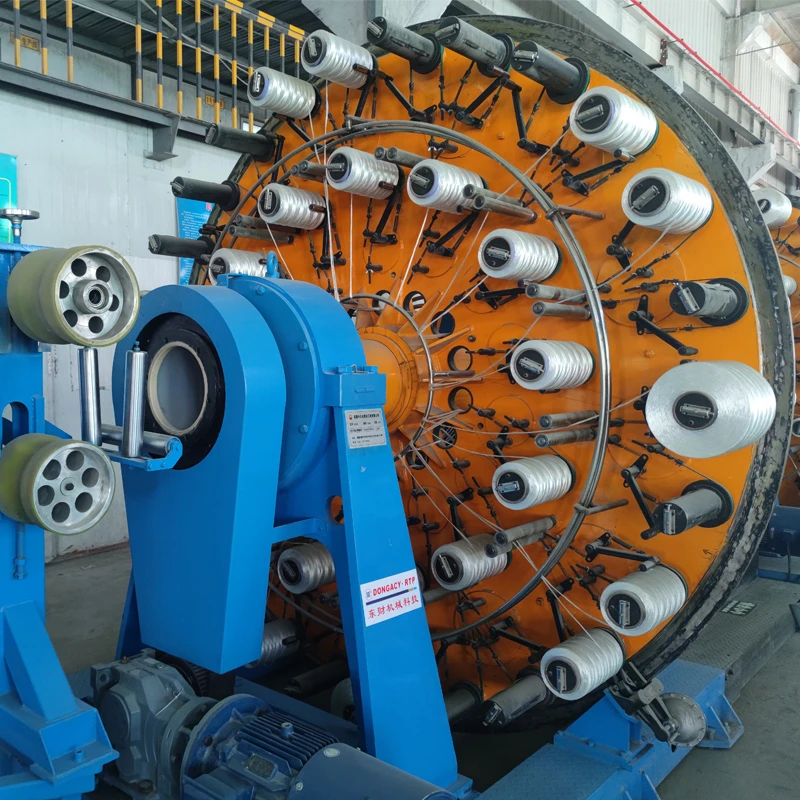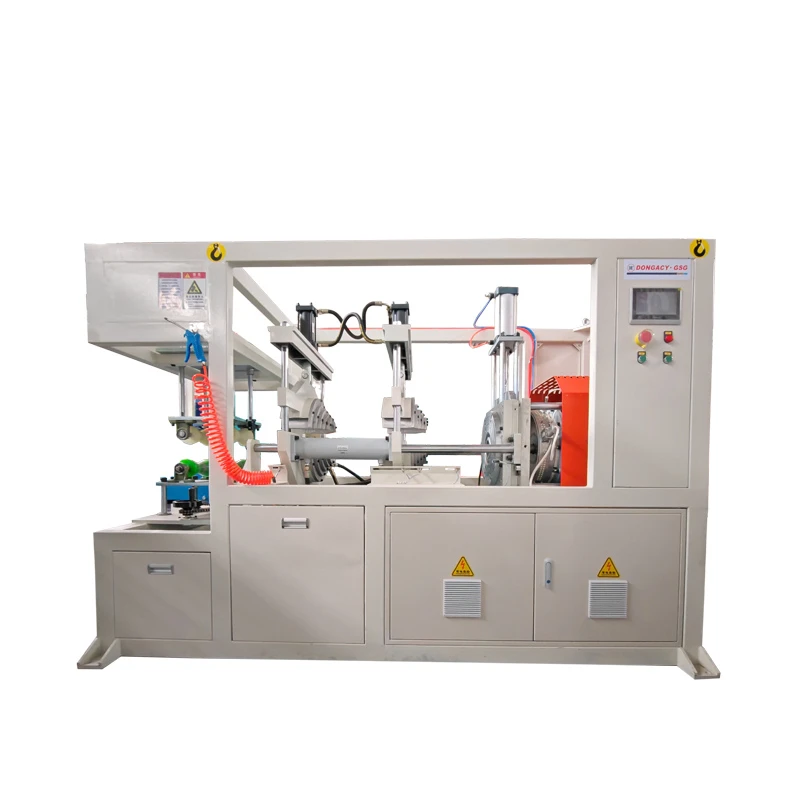
In an era demanding sustainable, durable, and efficient infrastructure solutions, polyethylene pipes have emerged as a cornerstone. Their widespread adoption in critical sectors like water supply, gas distribution, and drainage is directly attributable to the advancements in manufacturing technology. Central to this evolution is the polyethylene pipe production line – a sophisticated assembly of machinery designed for high-precision, high-volume manufacturing. This comprehensive guide delves into the intricate world of HDPE pipe extrusion, covering everything from market trends and technical specifications to real-world applications and the undeniable advantages offered by modern extrusion technology.
Industry Trends and Market Dynamics in Polyethylene Pipe Manufacturing
The global market for polyethylene pipes is experiencing robust growth, driven by increasing urbanization, the urgent need for infrastructure upgrades, and a growing emphasis on sustainable materials. According to recent market reports, the global HDPE pipe market size was valued at approximately USD 20.5 billion in 2022 and is projected to reach USD 35.8 billion by 2032, exhibiting a compound annual growth rate (CAGR) of 5.7% from 2023 to 2032. This growth underscores the critical role of the polyethylene pipe production line in meeting escalating demand.
Key trends shaping the industry include:
- Digitalization and Automation: Advanced control systems, IoT integration, and AI-driven predictive maintenance are optimizing production efficiency and reducing waste.
- Sustainability Focus: Demand for energy-efficient production processes and pipes made from recycled HDPE is increasing, aligning with global environmental goals.
- Larger Diameter Pipes: Growing demand for large-diameter pipes in municipal water and wastewater projects necessitates more powerful and versatile pe pipe extrusion line systems.
- Multi-layer and Specialty Pipes: Development of co-extrusion technologies for pipes with enhanced properties (e.g., oxygen barrier, UV resistance) for niche applications.
Introducing the Hdpe High Speed And High Efficiency Extrusion Production Line
Our flagship product, the Hdpe High Speed And High Efficiency Extrusion Production Line, available at https://www.ahdc11.com/hdpe-high-efficiency-extrusion-production-line.html, represents the pinnacle of modern pipe manufacturing technology. Engineered for superior performance, this line is designed to produce high-quality HDPE/MDPE pipes with exceptional speed and efficiency, catering to a wide range of industrial and municipal applications.
Core Technical Parameters and Specifications
Understanding the technical specifications is crucial for evaluating the capabilities of a polyethylene pipe production line. Our Hdpe High Speed And High Efficiency Extrusion Production Line is optimized for precision and throughput:
| Parameter | Specification (Typical for Hdpe High Speed Line) | Description / Benefit |
|---|---|---|
| Pipe Diameter Range | DN 20mm - DN 1200mm (configurable) | Versatility for various applications, from small water lines to large municipal mains. |
| Extruder Type | High-efficiency Single Screw Extruder (e.g., JM Series) | Optimized screw design for HDPE, ensuring uniform melting and high output. |
| Output Capacity | 200 kg/h - 1500 kg/h (depending on model/pipe size) | High throughput for large-scale production, reducing cost per meter. |
| Motor Power | 75 kW - 350 kW (variable frequency drive) | Energy-efficient operation, precise speed control. |
| Vacuum Calibration Tank Length | 6m - 12m | Ensures precise pipe dimensioning and roundness. |
| Haul-off Unit Speed | 0.5 m/min - 15 m/min | Synchronized pull for consistent wall thickness and output speed. |
| Cutting Method | Planetary Cutter / Chip-less Cutter | Smooth, precise cuts with minimal waste; suitable for various pipe lengths. |
| Control System | PLC Control with Touch Screen HMI | User-friendly operation, real-time monitoring, data logging, remote diagnostics. |
| Power Consumption | Optimized for energy efficiency (kWh/kg) | Lower operational costs, reduced environmental footprint. |
Detailed Manufacturing Process of a Polyethylene Pipe Production Line
The manufacturing of HDPE pipes on an hdpe pipe extrusion machine for sale is a continuous, automated process that transforms raw polyethylene pellets into finished pipes. Here's a step-by-step breakdown:

Image: Overview of a modern polyethylene pipe production line setup.
-
Material Feeding & Drying: High-density polyethylene (HDPE) pellets, often mixed with masterbatch (for color) and additives (UV stabilizers, antioxidants), are fed into the extruder's hopper. For optimal performance and prevention of moisture-related defects, the material is typically pre-dried.
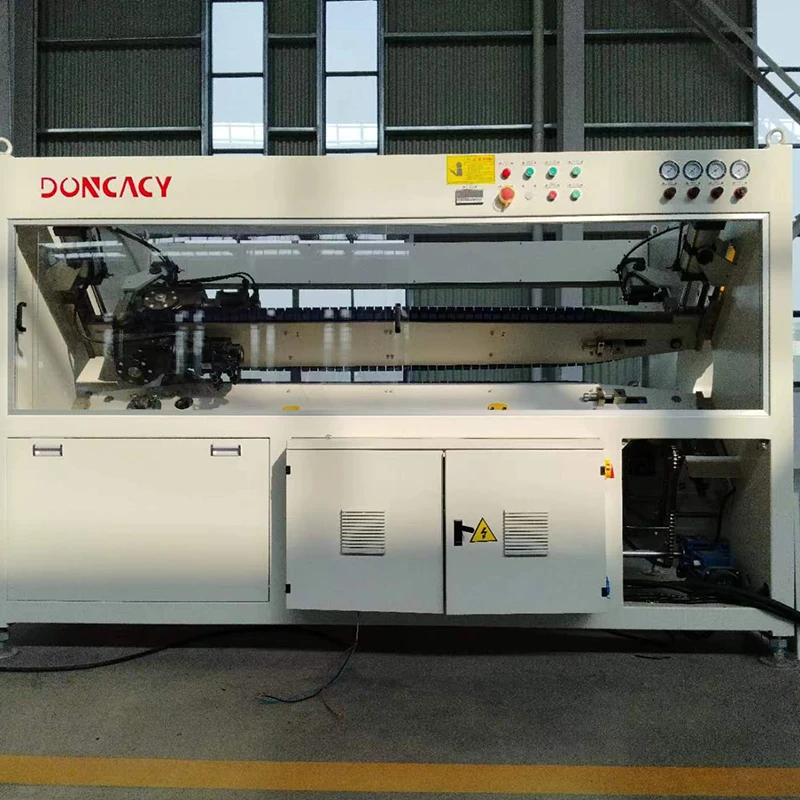
Image: Close-up of the extruder screw and barrel on an hdpe pipe extrusion machine for sale.
- Extrusion (Melting & Homogenizing): The core of the pe pipe extrusion machine is the single-screw extruder. As the pellets are conveyed through the heated barrel by a rotating screw, they melt under controlled temperature and pressure. The screw's design ensures thorough mixing and homogenization of the molten polymer, eliminating air bubbles and impurities. This process relies on both external heating (heater bands) and internal shear heating generated by the screw's rotation.
- Die Head & Forming: The molten HDPE is then pushed through a specialized pipe die head. This critical component shapes the molten plastic into a continuous tubular form. The die head's design, including internal mandrels and external dies, determines the pipe's exact outer diameter (OD) and wall thickness (WT). Modern die heads are often spiral-type, ensuring uniform melt distribution and concentricity.
- Vacuum Calibration & Cooling: Immediately after exiting the die head, the hot pipe enters a vacuum calibration tank. A vacuum inside the tank pulls the soft plastic against a sizing sleeve (or calibration sleeve), ensuring precise outer diameter and wall thickness. Simultaneously, water sprays within the tank rapidly cool the pipe, solidifying its shape. Multiple cooling tanks may be used for larger diameter or thicker-walled pipes to ensure complete solidification.
-
Spray Cooling: Following the vacuum tank, additional spray cooling tanks further reduce the pipe's temperature, ensuring its complete rigidity before the pulling process. This prevents deformation and stress in the finished product.
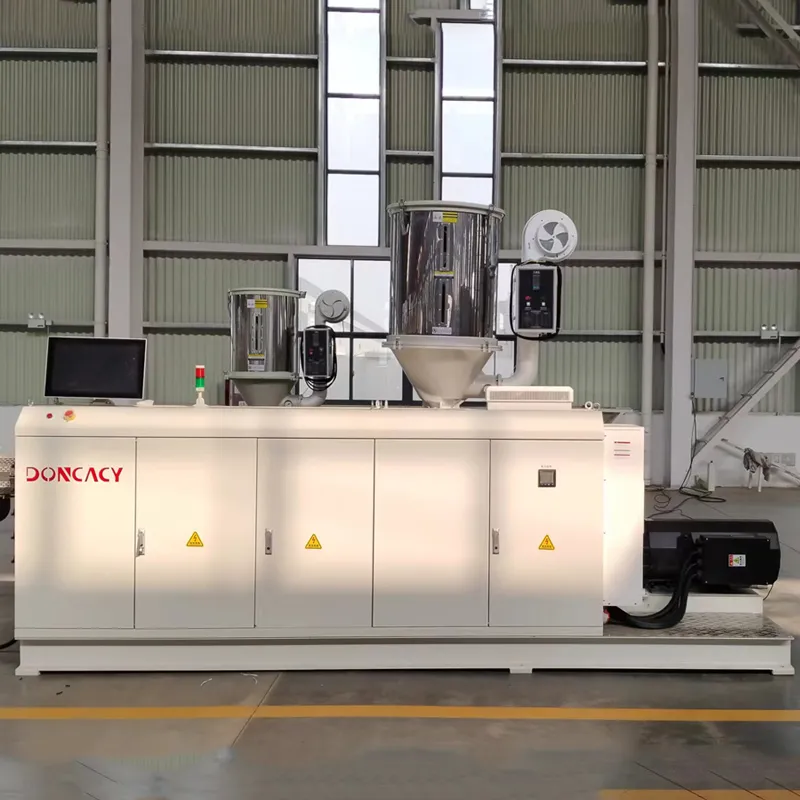
Image: The cooling and calibration section of a polyethylene pipe production line, crucial for dimensional accuracy.
- Haul-off Unit (Pulling): A multi-caterpillar haul-off unit continuously pulls the pipe through the calibration and cooling sections at a precise, synchronized speed. This speed directly influences the wall thickness and overall output rate. The haul-off unit prevents sag and ensures consistent pulling tension.
- Cutting Unit: Once the pipe reaches the desired length, a cutting unit (e.g., planetary cutter for large diameters, or saw cutter) precisely severs the pipe. For high-speed lines, chip-less cutters are often employed to ensure clean, smooth cuts without generating plastic debris.
- Stacking/Winding: The cut pipes are then automatically transferred to a stacking unit for larger diameters or a coiler for smaller diameter pipes (typically up to DN 110mm) to be wound into coils for transport and storage.
-
Quality Control: Throughout the process, various inline and offline quality control measures are implemented, including ultrasonic thickness gauges, eccentricity measurement systems, and visual inspections to ensure the pipe meets specified standards (e.g., ISO 4427, ASTM F714).
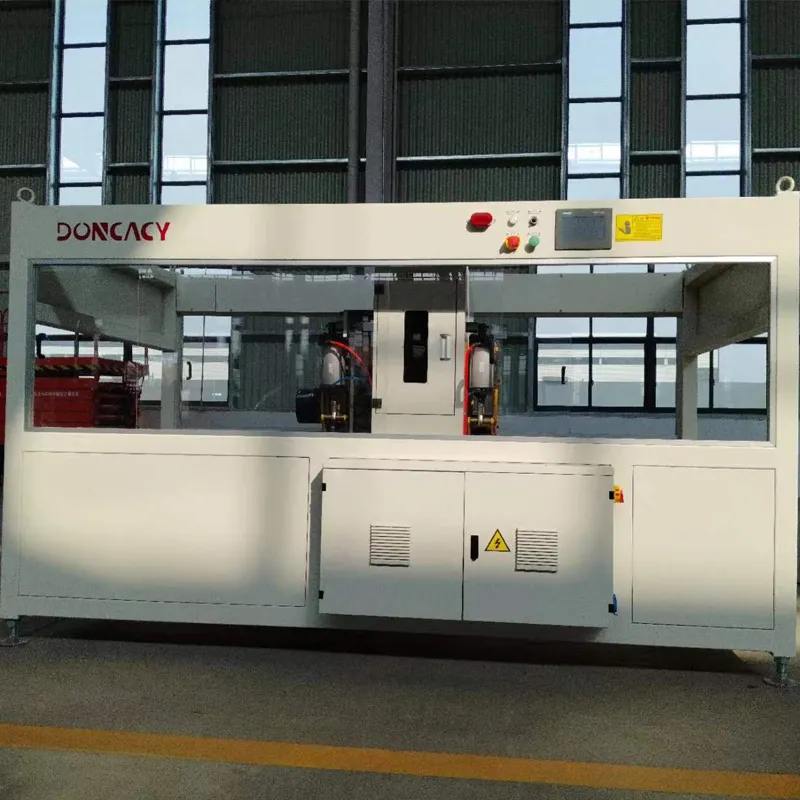
Image: The final stages of the polyethylene pipe production line, including cutting and inspection.
Product Material, Manufacturing Craftsmanship, and Quality Standards
The success of a polyethylene pipe production line hinges on the quality of raw materials and the precision of manufacturing processes.
- Product Material: Primarily High-Density Polyethylene (HDPE), a thermoplastic polymer known for its high strength-to-density ratio. HDPE pipes are resistant to corrosion, abrasion, chemical attack, and UV radiation, making them ideal for demanding applications. Our lines are designed to process various grades of HDPE, including PE80 and PE100, which offer enhanced pressure resistance and longevity.
- Manufacturing Process: The extrusion process, as detailed above, is a continuous method. Unlike casting or forging, which are used for metals, extrusion for plastics ensures a uniform, seamless pipe structure. Key components of our production lines, such as the screw and barrel of the extruder, are manufactured using specialized alloys and precision CNC machining to ensure high wear resistance and consistent performance over years of operation. The die heads are meticulously designed for optimal melt flow.
- Detection Standards: Adherence to international standards is paramount. Our Hdpe High Speed And High Efficiency Extrusion Production Line is engineered to produce pipes that comply with major global standards, including:
- ISO 4427: For polyethylene (PE) pipes for water supply.
- EN 12201: For plastic piping systems for water supply.
- ISO 8772: For plastics pipes and fittings for general purpose pressure applications.
- ASTM D3035 / F714: For polyethylene (PE) plastic pipe (SDR-PR) based on controlled outside diameter.
- ANSI: American National Standards Institute, often referenced for quality and dimensional accuracy in North America.
- Service Life: HDPE pipes produced on a well-maintained pe pipe extrusion line have an exceptional service life. With proper installation and under normal operating conditions, they can last for 50 to 100 years or even more, significantly outperforming traditional materials like ductile iron or concrete in terms of longevity and low maintenance requirements.
Applicable Industries and Application Scenarios
The versatility of HDPE pipes produced by a high-quality polyethylene pipe production line makes them indispensable across numerous sectors:
- Water Supply and Distribution: The primary application. HDPE pipes are ideal for potable water lines due to their non-toxic nature, corrosion resistance, and leak-free fusion joints, ensuring clean water delivery without contamination.
- Gas Distribution: Used extensively for natural gas pipelines due to their flexibility, resistance to stress cracking, and fusion capabilities, which create a strong, durable, and leak-proof system.
- Wastewater and Drainage Systems: Their smooth interior surface promotes excellent flow characteristics, while their resistance to chemicals and abrasion makes them perfect for sewage and industrial effluent lines.
- Mining Applications: HDPE pipes handle abrasive slurries, corrosive chemicals, and high-pressure water for dewatering, tailings disposal, and process water transfer.
- Agricultural Irrigation: Lightweight and flexible, they are easy to install for drip irrigation and sprinkler systems, resisting harsh agricultural chemicals.
- Conduit for Cables (Telecommunications/Power): Protecting fiber optic and electrical cables due to their durability and ease of installation through trenchless methods.
- Industrial Processes: Transfer of various chemicals, slurries, and process fluids where corrosion resistance and inertness are critical.
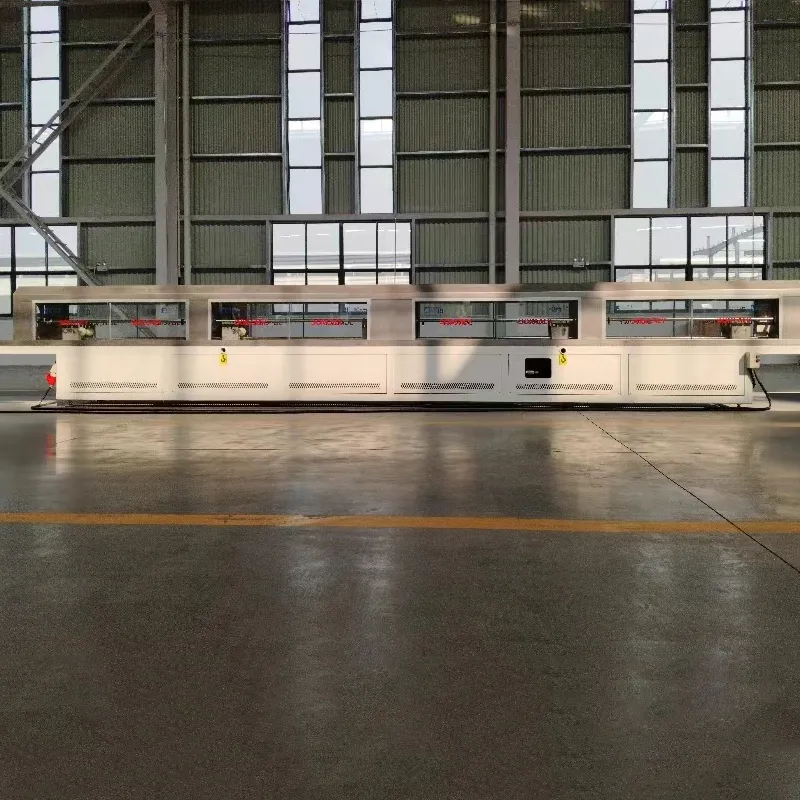
Image: HDPE pipes being used in a large-scale infrastructure project, demonstrating the versatility of products from a polyethylene pipe production line.
Advantages in Typical Scenarios:
- Energy Efficiency: The smooth internal bore of HDPE pipes results in lower friction loss compared to traditional pipes, reducing pumping energy requirements and operational costs in water and fluid transfer systems.
- Corrosion Resistance: Unlike metal pipes, HDPE does not rust, rot, or corrode. This makes it ideal for buried applications and transporting corrosive media, leading to significantly longer service life and reduced maintenance.
- Leak-Free Joints (Fusion Welding): HDPE pipes can be joined by heat fusion, creating a monolithic, leak-proof system. This is a significant advantage over mechanical joints that are prone to leaks and root intrusion, especially critical in gas distribution and potable water systems.
- Flexibility and Impact Resistance: HDPE pipes can withstand ground shifts, seismic activity, and surges in pressure, making them highly resilient in challenging environments. This flexibility also allows for trenchless installation methods, reducing disruption and costs.
Technical Advantages of Our Polyethylene Pipe Production Line
Our Hdpe High Speed And High Efficiency Extrusion Production Line is designed with cutting-edge technology to offer distinct advantages:
- High-Efficiency Extruder: Equipped with a specialized high-speed, low-melt temperature extruder, it significantly boosts output while reducing energy consumption. The optimized screw geometry ensures superior plasticization and melt homogeneity.
- Precision Control System: Integrated PLC control with a user-friendly HMI (Human-Machine Interface) provides precise control over all process parameters, including temperature, pressure, speed, and dimensional accuracy. This ensures consistent product quality and minimizes operator intervention.
- Gravimetric Dosing System: Optional but highly recommended, a gravimetric dosing system ensures accurate material feeding, leading to consistent pipe weight per meter and significant material savings, especially beneficial for lines operating at hdpe pipe production line price points that emphasize material efficiency.
- Advanced Cooling Technology: Multi-stage vacuum calibration and high-efficiency spray cooling systems ensure rapid and uniform cooling, essential for maintaining precise pipe dimensions and crystallinity, particularly for large diameter pipes.
- Synchronized Line Speed: All downstream equipment (haul-off, cutter) are synchronized with the extruder speed via servo or frequency converters, ensuring stable pulling and cutting, critical for maintaining consistent wall thickness.
- Energy Saving Features: Utilization of high-efficiency motors, intelligent heating zones, and optimized machine design significantly reduces overall power consumption per kilogram of pipe produced, contributing to lower operating costs.
Manufacturer Comparison: What to Look For in a PE Pipe Extrusion Line Supplier
When considering an hdpe pipe extrusion machine for sale, evaluating potential manufacturers is crucial. Beyond just the hdpe pipe production line price, consider the following:
| Evaluation Criterion | Our Approach | Why it Matters for Your Polyethylene Pipe Production Line |
|---|---|---|
| R&D and Innovation | Continuous investment in new technologies, patents for extruder and die head designs. | Ensures you get the most efficient, advanced, and future-proof machinery. Keeps you competitive. |
| Manufacturing Quality | Precision CNC machining, high-grade materials for critical components, ISO 9001 certified processes. | Impacts machine lifespan, reliability, and the quality of pipes produced. Reduces downtime. |
| After-Sales Support | Global service network, experienced technicians, spare parts availability, remote diagnostics. | Minimizes operational disruptions, ensures quick problem resolution, and maximizes uptime. |
| Customization Capabilities | Ability to tailor line configuration (diameter range, output, special features) to client needs. | Ensures the line perfectly matches your specific production goals and market demands. |
| Energy Efficiency | Use of servo motors, optimized heating, and cooling systems. | Directly impacts long-term operational costs and environmental footprint. |
| Certifications & Compliance | CE certified, adhere to international safety and quality standards (e.g., ISO, UL components). | Ensures the machinery is safe, reliable, and meets regulatory requirements for global markets. |
Customized Solutions and Project Implementation
Recognizing that every client's needs are unique, we specialize in providing tailored polyethylene pipe production line solutions. This means:
- Needs Assessment: A detailed consultation to understand your desired pipe types (material, diameter, wall thickness), production capacity, budget, and existing infrastructure.
- Line Configuration: Designing a custom line layout, selecting the optimal extruder size, die head, vacuum tank, haul-off, and cutting unit to meet your specific requirements. This might include specialized co-extrusion dies for multi-layer pipes or specific automation levels.
- Ancillary Equipment: Integration of auxiliary equipment such as gravimetric dosing systems for material savings, automatic pipe winding machines for small diameters, or belling machines for socketed pipes.
- Turnkey Projects: We can offer complete turnkey solutions, including factory layout design, equipment installation, commissioning, operator training, and ongoing technical support, ensuring a smooth transition from project conception to full production. Our project managers have years of experience deploying complex pe pipe extrusion line systems globally.
Real-World Application Cases and Client Feedback
Our Hdpe High Speed And High Efficiency Extrusion Production Line has been successfully implemented in diverse projects worldwide, demonstrating its reliability and performance.

Image: A functional polyethylene pipe production line in operation, showing the scale and complexity.
- Case Study 1: Municipal Water Project, Southeast Asia: A leading infrastructure company procured our DN 630mm polyethylene pipe production line to supply pipes for a major urban water network expansion. The client reported a 15% increase in production efficiency and a 7% reduction in raw material waste compared to their previous lines, directly impacting their hdpe pipe production line price per meter. The consistent quality of the pipes produced led to fewer installation issues and greater public trust.
- Case Study 2: Gas Pipeline Expansion, Middle East: For a critical natural gas distribution project, our high-speed DN 250mm pe pipe extrusion machine was selected. The line's advanced gravimetric dosing system and precise control ensured optimal pipe wall thickness and material usage, contributing to significant cost savings and compliance with strict gas industry standards. The client praised the line's stability and minimal downtime.
- Client Testimonial (Hypothetical): "We invested in their Hdpe High Speed And High Efficiency Extrusion Production Line a year ago, and it has transformed our pipe manufacturing capabilities. The machine's output and reliability are outstanding, and their after-sales support has been incredibly responsive. This investment has certainly given us a competitive edge in the market." - Production Manager, Leading Pipe Manufacturer.
Frequently Asked Questions (FAQ) about Polyethylene Pipe Production Lines
- Q1: What are the primary advantages of HDPE pipes over traditional materials like PVC or metal?
- A1: HDPE pipes offer superior corrosion and chemical resistance, excellent flexibility and impact strength, a longer service life (50+ years), leak-free heat-fused joints, and lower installation costs due to their lighter weight and ability for trenchless installation. They are also more environmentally friendly, being recyclable.
- Q2: What is the significance of "PE100" or "PE80" in HDPE pipe manufacturing?
- A2: PE100 and PE80 refer to the Minimum Required Strength (MRS) of the polyethylene material in MPa. PE100 has an MRS of 10 MPa, while PE80 has an MRS of 8 MPa. PE100 is a newer generation material, offering higher pressure ratings for the same wall thickness, or thinner walls for the same pressure, leading to material savings and improved flow capacity for pipes made on a polyethylene pipe production line.
- Q3: How does a gravimetric dosing system improve the polyethylene pipe production line?
- A3: A gravimetric dosing system precisely measures and controls the material throughput by weight, rather than volume. This ensures consistent pipe weight per meter and exact wall thickness, minimizing material overconsumption and reducing scrap, leading to significant raw material savings and higher product quality. This directly impacts the overall hdpe pipe production line price competitiveness of the manufactured pipes.
- Q4: What are the typical installation standards for HDPE pipes produced on these lines?
- A4: Installation standards typically follow international guidelines such as ISO 21307 (for butt fusion), ASTM F2620 (for electrofusion), or local codes. These standards cover aspects like trenching, backfilling, fusion parameters (temperature, pressure, time), testing, and quality control during installation to ensure the long-term integrity of the pipeline system.
- Q5: What kind of after-sales support can I expect for an hdpe pipe extrusion machine?
- A5: Reputable manufacturers offer comprehensive after-sales support including installation and commissioning supervision, operator training, technical troubleshooting, remote diagnostics, and readily available spare parts. We provide a dedicated support team to ensure your polyethylene pipe production line operates smoothly with minimal downtime.
- Q6: What is the typical delivery cycle for a new pe pipe extrusion line?
- A6: The delivery cycle can vary depending on the complexity and customization of the line, as well as current production schedules. Typically, it ranges from 60 to 120 working days from order confirmation to shipment. We work closely with clients to provide accurate timelines and regular updates throughout the manufacturing process.
- Q7: What is the warranty period for your polyethylene pipe production line and what does it cover?
- A7: Our standard warranty typically covers 12 to 18 months from the date of shipment or commissioning, whichever comes first, against manufacturing defects and faulty components under normal operating conditions. Consumable parts are generally excluded. Detailed warranty terms are provided with each quotation.
Conclusion: Driving Efficiency and Sustainability with Advanced Extrusion
The polyethylene pipe production line is more than just a piece of machinery; it's a critical investment in the future of infrastructure. As global demand for reliable, long-lasting, and environmentally conscious piping solutions continues to surge, the importance of high-speed, high-efficiency extrusion technology becomes increasingly evident. Our Hdpe High Speed And High Efficiency Extrusion Production Line stands at the forefront of this evolution, offering unmatched performance, precision, and economic benefits. By combining cutting-edge engineering with comprehensive support and a commitment to quality, we empower manufacturers to meet market demands, reduce operational costs, and contribute to a more sustainable future.
We invite you to explore our solutions further at https://www.ahdc11.com/hdpe-high-efficiency-extrusion-production-line.html and discover how our advanced pe pipe extrusion machine can elevate your production capabilities.
References & Further Reading:
- Plastics Industry Association (PLASTICS): https://www.plasticsindustry.org/
- Plastic Pipe Institute (PPI): https://plasticpipe.org/
- Journal of Polymer Engineering and Science: (Accessible via academic databases, e.g., Wiley Online Library)
- Market Research Report on HDPE Pipes (e.g., from Grand View Research or Fortune Business Insights): Consult recent industry reports for specific market size and growth figures.
-
Innovative Solutions in PVC Pipe Production LineNewsJul.18,2025
-
Innovative Solutions in Pipe Extrusion Production LineNewsJul.18,2025
-
Advanced Plastic Profile Extrusion SolutionsNewsJul.18,2025
-
PVC Profiles: The Future of Durable and Cost-Effective Construction SolutionsNewsJun.06,2025
-
PVC Pipe Extrusion LineNewsJun.06,2025
-
High-Quality Polyethylene Pipe Production LineNewsJun.06,2025
-
High-Performance Tube Production LineNewsJun.06,2025

